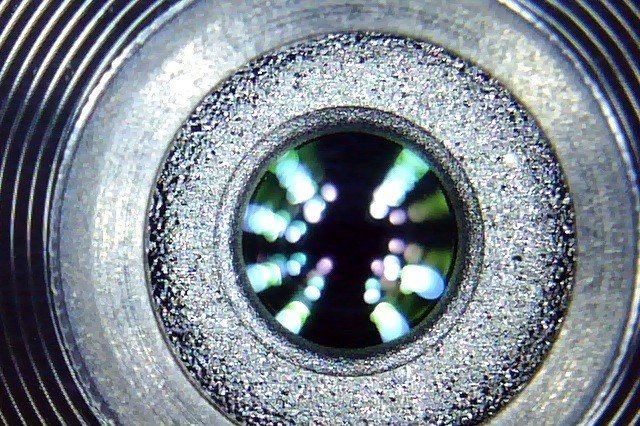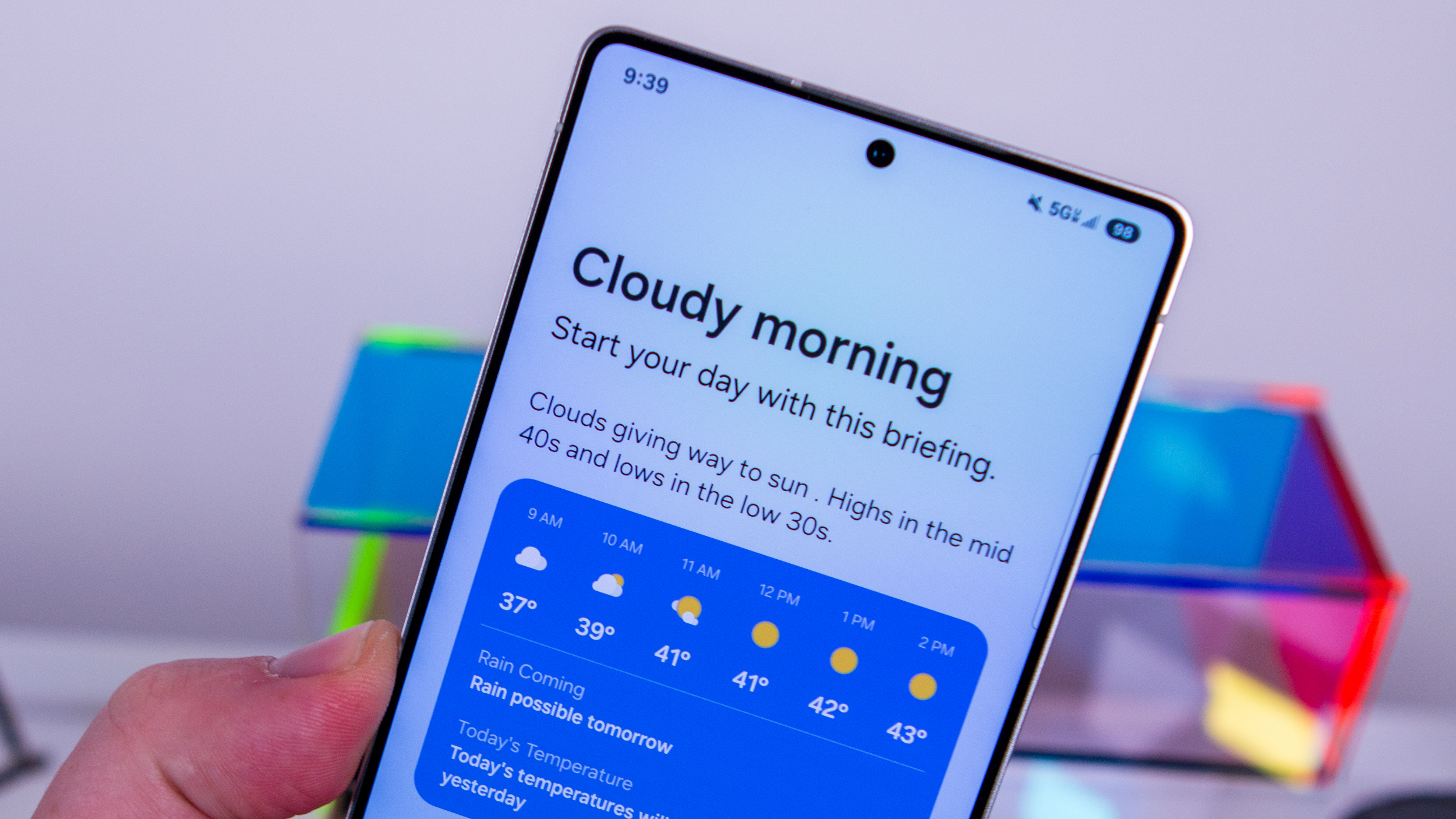Through the looking glass: The Nexus 5 under the microscope

Your phone is filthy and covered with scratches — but it still looks better than your computer monitor
I chanced across my little USB microscope the other day while looking for a printer cable. I never found the printer cable, but I did keep the microscope on my desk because I knew I would find time to play with it err, um, do some work with it. While the folks who make USB microscopes always show interesting pictures of money or plants or something else all nature-ish and educational, I just had to look at phones, because I'm that kind of nerd. And my wife doesn't allow me to have money. Just kidding. Not really.
Anyhoo, after looking at screens for a bit I decided to grab my Nexus 5 and check it all out. I learned a couple things, and I figured it was interesting enough to share.
Your phone is filthy, and covered with scratches
I'm a little obsessive about keeping my phone clean — or what I think is clean. I can't stand smudges and fingerprints, and even carry a microfiber cloth in my wallet to wipe them away. I learned that this may help you think your phone is clean, but gunk and skin and other nasty things from pockets and hands make your phone really really nasty. Like disgustingly nasty. Did I mention it's nasty?






That's not the worst thing. Your phone is also covered, both front and back, with scratches. You might not be able to see them with your eyes, or feel them with your fingers, but they are there, mocking us for being so protective and diligent. At first I thought it was dirt. But about 20 Q-tips soaked in alcohol later I have decided that I'm forced to use a phone that's scratched up. And filthy.






I'm sure this is normal wear and tear for any phone. All my other phones look similar, but if you were to pick them up you would think they were in very nice shape and very clean. Nothing here affects the operation of my N5, and before I looked at it with 100x magnification I had no idea. I'm going to try and unsee all of this. My wife is the smart one — she won't let me look at her phone so she will never see the filth and the scuffs. She now calls my Nexus 5 "The Unclean One." But it only bugs me a whole freaking lot. Dammit, Terry.
OK, so enough about my dirty nasty scratched up phone. I also spent some time looking at the screen, and found a neat demonstration of why ppi matters. Keep reading.
Be an expert in 5 minutes
Get the latest news from Android Central, your trusted companion in the world of Android
Your dirty phone still looks better than your monitor does.


Those are the same image. Yup, one and the same — a picture of Phil's avatar for his mobilenations.com email. The difference? The top one is taken on a 445ppi screen, and the bottom is taken from an 82ppi screen.
Your Nexus 5 has a pretty good 1080p (1080 pixels by 1920 pixels) screen, but it only measures 4.95-inches across the diagonal. My monitor also has a 1080p screen, but it measures 27-inches across the diagonal. That means the pixels and subpixels on the Nexus 5 are a whole lot smaller than they are on my monitor. This is simplified and doesn't take things like dot-pitch into account, but saying the pixels are a lot smaller is true. There are more of them in an inch — 363 more to be exact. On our Androids — both phones and tablets — ppi is much more important than resolution.
To better understand why, we need to talk about how an LCD displays the things you see on it. Each pixel is a point of light. It can be almost any color because it is made of subpixels that are red, blue and green. By varying the voltage to each individual subpixel, your phone can display millions of colors. Here's an example slide show using my monitor so you can see the bigger pixels.





Notice how each individual subpixel is lighted or not lighted to display the color we expect to see. Purple is red and blue, just as you would expect. White is everything running wide open and as bright as it can be. Turning the subpixels on and off presents the color to our eye, and it's done in the shape we need it to be in to create a picture or text. Now look at these two.


The top one (that's my monitor again so we can see the subpixels) is part of a webpage where two shades of grey meet each other. You can see both are using all three subpixels, but the brighter (as in lighter colored) grey is lit up more. The bottom picture is my Nexus 5 again, displaying a black picture. You can see the pixels are barely lit, but none are bright and make any real color. Because an LCD screen is still backlit even when showing black, you can see the pixels and won't get that same liquid-black look you do from AMOLED displays that are actually shut off to show black.
By varying which subpixels are lighted, and how brightly they are lit, we see what the programmer wanted us to see on the screen with the naked eye. Here are a few examples from the Nexus 5 at 100x magnification. Notice that you can see the pixels when zoomed in this close, but you can still tell what you're looking at. Also — notice the colors and what effect much smaller pixels have on what we see.








At the same magnification and same crop factor, you can really see how pixel density matters. I used a monitor here to easily demonstrate the differences, but it applies for any screen. This is why smaller screens still look good at lower resolutions, while larger screens don't.
I hope you found all this as interesting as I did. It's one thing to talk about pixels and ppi and resolution, but seeing it in action was really cool. While I had things out play... er working, I also grabbed some neat close-ups of the sensors and cameras on the N5, see those below. And remember, wash your hands after you touch that nasty phone!





Jerry is an amateur woodworker and struggling shade tree mechanic. There's nothing he can't take apart, but many things he can't reassemble. You'll find him writing and speaking his loud opinion on Android Central and occasionally on Threads.
